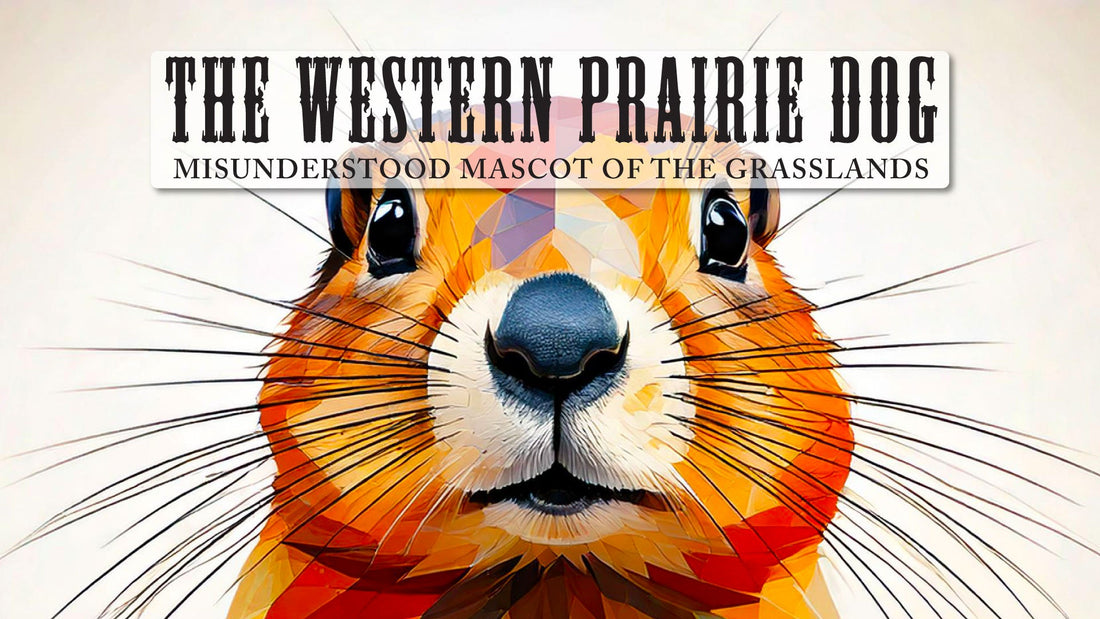
The Western Prairie Dog: Misunderstood Mascot of the Grasslands
Prairie dogs, the small, chirping residents of the Western plains, are far more fascinating than their humble size might suggest. While often misunderstood or even maligned, these tiny mammals are keystone species that play a pivotal role in the health of the prairie ecosystem. Let’s dig into some common misconceptions and uncover ten fascinating facts about the western prairie dog.
Common Misconceptions About Prairie Dogs
1. Prairie Dogs Are Just Pests
One of the most persistent myths about prairie dogs is that they’re destructive pests. While their burrowing can sometimes conflict with agricultural interests, these tunnels aerate the soil, improve water absorption, and even help prevent erosion, making them vital for the health of grasslands.
2. They’re Related to Dogs
Despite their name, prairie dogs are not dogs at all but members of the squirrel family. Their name comes from their high-pitched “barks” that resemble a dog’s yap.
3. They Spread Disease Rampantly
While prairie dogs can carry fleas that might transmit diseases like plague, widespread outbreaks are rare. Responsible ecosystem management can minimize such risks.
Top 10 Fascinating Facts About Prairie Dogs
1. They’re Master Engineers
Prairie dog burrows are complex underground networks with separate chambers for sleeping, nursing young, and even escaping predators. These “towns” can span hundreds of acres and house thousands of prairie dogs.
2. They Have a Sophisticated Language
Prairie dogs have one of the most advanced communication systems among non-human animals. Their chirps and barks can convey detailed information about predators, including size, speed, and even the type of threat.
3. They’re Ecosystem Heroes
As a keystone species, prairie dogs support over 150 other species. Their burrows provide shelter for animals like burrowing owls and black-footed ferrets, and their presence enriches the prairie ecosystem.
4. They Practice Social Grooming
Prairie dogs are highly social animals. They reinforce bonds by grooming each other, a behavior that also helps maintain hygiene within their colonies.
5. They Can Recognize Each Other
Studies have shown that prairie dogs can distinguish between individual members of their colony and greet each other with “kisses” or nuzzles.
6. They’re Surprisingly Agile
Although they spend much of their time digging or foraging, prairie dogs can sprint at speeds of up to 35 mph when escaping predators.
7. They Play a Role in Climate Regulation
By digging burrows and churning up soil, prairie dogs help sequester carbon in the ground, indirectly contributing to climate regulation.
8. They’ve Been Around for Millions of Years
Prairie dogs are ancient survivors, with fossils dating back millions of years. They’ve adapted remarkably well to changes in their environment over time.
9. Their Numbers Are Shrinking
Due to habitat loss, disease, and human activity, prairie dog populations have declined by over 95% since the 1800s. Conservation efforts are crucial to their survival.
10. They Have a “Town Crier”
In every prairie dog colony, certain individuals act as sentinels. These lookout prairie dogs watch for predators and alert the colony with warning calls when danger approaches.
Why Prairie Dogs Matter
Prairie dogs are much more than their quirky behaviors or cutesy appearance. They’re vital engineers and caretakers of the prairies, providing benefits that ripple through the entire ecosystem. By learning to appreciate and protect these fascinating creatures, we also protect the health and resilience of the grasslands they call home.
So next time you see a prairie dog popping up from its burrow, take a moment to appreciate this small but mighty steward of the Western plains!
